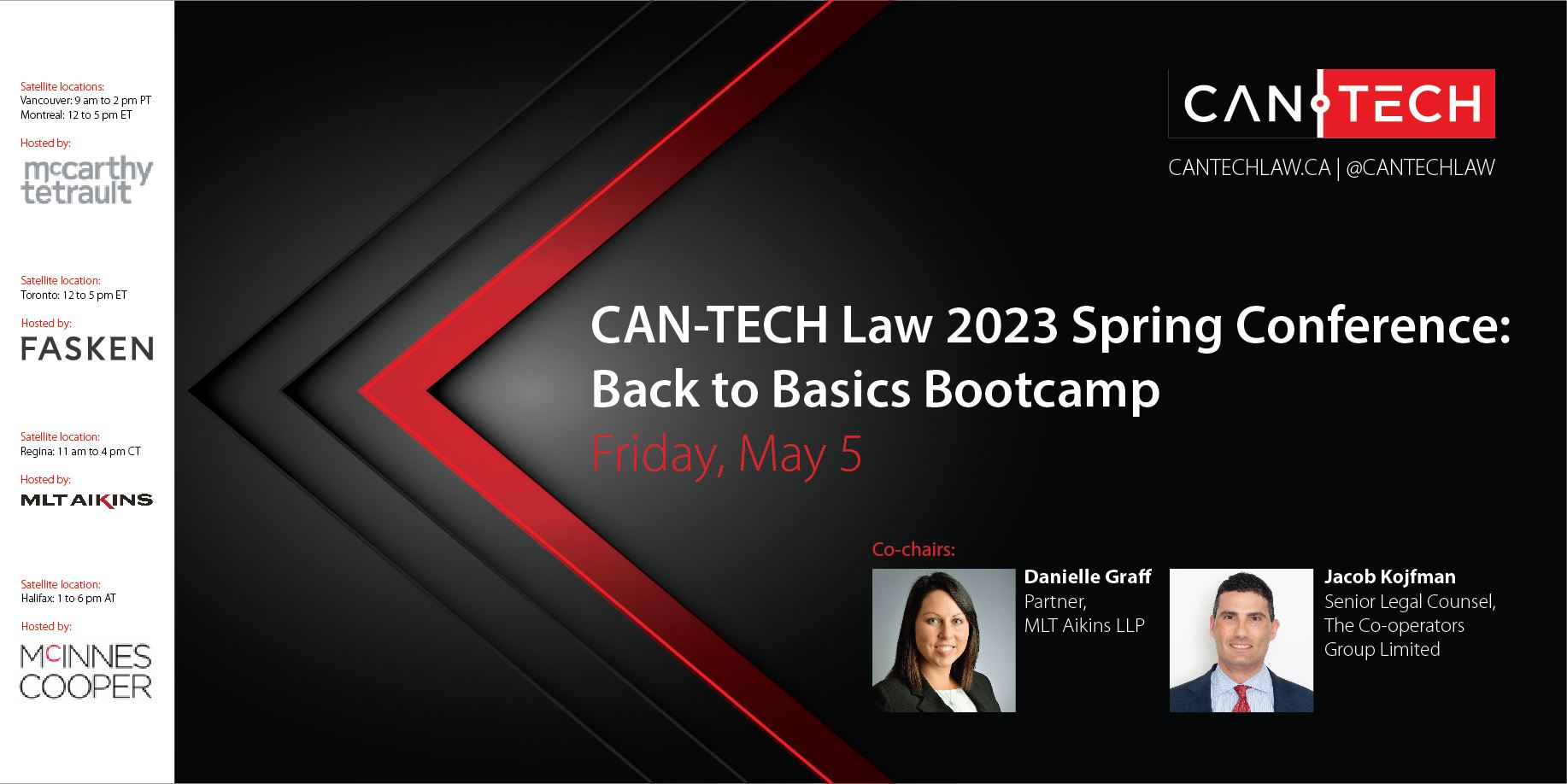

If you were unable to attend the CAN-TECH Law 2023 Spring Conference, we have great news! The conference recordings are now available for purchase, offering valuable insights and discussions from industry experts.
This was a first-of-its-kind CAN-TECH conference. The event was held from coast-to-coast – starting in Vancouver and ending in Halifax – with five offices (Vancouver, Regina, Toronto, Montreal, and Halifax) each hosting one live panel and participating in the other panels via Zoom. This let the attendees participate in a cost-effective and time-efficient manner, while still getting all the benefits of the breadth and depth of experience that CAN-TECH’s members have to offer.

Highlights include a conversation about limitations of liability and indemnity between Dana Siddle, a partner at McCarthy Tetrault LLP, and Rahim Esmail, Senior Counsel at TELUS, before moving on to Regina where Joseph Gill, a partner at McKercher LLP and Azure-Dee Ashton, Counsel at Saskatchewan Power Corporation discussed service levels.


Andrew Alleyne, partner at Fasken Martineau DuMoulin LLP, Mark Bowman, Senior Legal Counsel at Interac Corp. and Justice Agyemang, Senior Legal Counsel, HSBC Bank Canada broke down clauses that are often overlooked, and by colour-coding parts of clauses that are pertinent to the buy- and sell-side the attendees developed a better understanding of the positions they should be advancing on behalf of their clients.

Montreal had Eugen Miscoi, associate at McCarthy Tetrault LLP, and Patrice Labonte, General Counsel North America, Valtech share their knowledge about privacy and cybersecurity issues in a contract. This panel dissected LinkedIn’s Data Processing Agreement, a DPA that probably has the biggest impact on the attendees.

Finally, Jennifer Davidson, CAN-TECH’s president and partner at Deeth Williams Wall LLP, moderated a panel of David Fraser, a partner at McInnes Cooper, and Harj Gill, who most recently was Corporate Counsel for NTT Data Services, in an open and honest conversation about what lawyers new to the profession can do to ensure their success, the importance of mentorship, and how we can learn from our mistakes. (This was not recorded in order to allow for open and honest dialogue from our panel and audience).
The hope was that the attendees would leave the conference feeling more confident and comfortable in their understanding of technology transactions, the contracts, and the issues that often come up in them. Based on the expertise the panelists shared, and the accompanying materials, mission accomplished.
Fees:
Students: $40 plus tax
Members: $100 plus tax
Non-Members: $125 plus tax
In British Columbia, Ontario, and Saskatchewan, the conference offers 4-hours of substantive CPD, while Nova Scotia and Quebec are encouraged to incorporate this learning activity into their mandatory CPD plans.
To learn more about our speakers, Click Here.
 Access the Recordings Here
Access the Recordings Here